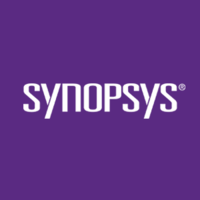Description

Codified Security

Synopsys
Comprehensive Overview: Codified Security vs Synopsys
Codified Security, part of Synopsys, focuses on application security, particularly in the mobile app development space. As part of the broader Synopsys portfolio, it complements a comprehensive suite of security and quality solutions. Here’s an overview based on the given points:
a) Primary Functions and Target Markets
Codified Security:
- Primary Functions: Codified Security offers automated mobile app security testing. It scans mobile applications for vulnerabilities, compliance issues, and malicious code, both before and after they are released. It provides developers with actionable insights to improve the security posture of their mobile apps.
- Target Markets: The primary market includes mobile app developers and companies that deploy mobile applications. Key sectors include financial services, healthcare, and retail, all of which require heightened security norms due to sensitive data handling.
Synopsys Overall:
- Primary Functions: Synopsys provides a wide range of products focusing on software integrity and chip design. In terms of security, it offers static analysis, software composition analysis, and dynamic analysis for identifying vulnerabilities across the software development lifecycle.
- Target Markets: Generally targets large enterprises across industries, including financial services, automotive, healthcare, technology, and IoT manufacturers, focusing on companies looking to integrate security into their software development processes.
b) Comparison in Terms of Market Share and User Base
While specific market share and user base figures for Codified Security alone might not be publicly detailed, when considering Synopsys as a whole:
- Market Share: Synopsys is a leader in the application security testing market. It competes with companies like Checkmarx, Veracode, and WhiteHat Security in the application security space.
- User Base: Synopsys serves a vast and diverse customer base, including many Fortune 500 companies due to its comprehensive array of products in software integrity and semiconductor design.
c) Key Differentiating Factors
Codified Security:
- Focus on Mobile: Specializes specifically in mobile security, offering nuanced insights and testing capabilities tailored for mobile app development. This makes it highly specialized compared to more generalist solutions.
- Automation and Ease of Use: Provides automated testing that is quick to integrate into existing CI/CD pipelines, emphasizing developer-friendly operations.
Synopsys Overall:
- Breadth of Solutions: Synopsys' portfolio covers not just mobile but also web application security, software composition analysis, and integrates seamlessly with various development tools and environments.
- Industry Leadership: Known for its cutting-edge research and development in the field of Application Security Testing (AST), benefiting from years of expertise and a broad spectrum of security and quality solutions.
- Comprehensive Offering: Beyond application security, offers services in electronic design automation (EDA) and semiconductor IP, giving it a competitive edge in industries producing both software and hardware.
By integrating Codified Security, Synopsys enhances its capabilities in the mobile domain, offering specialized tools for mobile app developers while maintaining its reputation as a leader in the broader application security landscape.
Contact Info

Year founded :
2015
Not Available
Not Available
United Kingdom
Not Available

Year founded :
Not Available
Not Available
Not Available
Not Available
Not Available
Feature Similarity Breakdown: Codified Security, Synopsys
Codified Security and Synopsys are both prominent players in the field of application security, often catering to different aspects of the security lifecycle. To provide a feature similarity breakdown, let's discuss their core features, user interfaces, and unique offerings.
a) Core Features in Common
-
Static Application Security Testing (SAST):
- Both solutions provide static code analysis to identify vulnerabilities in source code, binary code, or byte code without executing the program.
-
Integration Capabilities:
- Codified Security and Synopsys support integration with a variety of development environments, CI/CD pipelines, and DevOps tools to seamlessly embed security into the development process.
-
Compliance and Reporting:
- Both platforms offer compliance checks for standards like OWASP, CWE, and more. They provide detailed reporting and dashboards for security analytics.
-
Vulnerability Management:
- They assist in detecting and managing vulnerabilities within applications, offering guidance on remediation.
b) User Interface Comparison
-
Codified Security:
- Codified Security is known for its clean and streamlined user interface, conducive for mobile app security testing. It's designed to be intuitive, making it accessible for developers who may not be security experts.
-
Synopsys:
- Synopsys tools (especially products like Coverity for SAST) are robust and feature-rich, often preferred by teams that require deep, granular control over various testing facets. Their interface might seem more complex due to the breadth of capabilities offered, but it is comprehensive for users who need detailed analysis and customization.
c) Unique Features
-
Codified Security:
- Focus on Mobile Application Security:
- Codified Security is particularly strong in mobile app security, offering specialized tools and tests that are tailored specifically for mobile app ecosystems (iOS & Android). This can include dynamic analysis specifically designed for mobile applications.
- Faster Setup and Simplicity:
- Codified Security is known for its ease of setup and use, especially for smaller teams or those new to security testing.
- Focus on Mobile Application Security:
-
Synopsys:
- Broad Portfolio and Integration:
- As part of a larger suite of tools, Synopsys offers a broad range of security solutions, from software composition analysis (Black Duck) to dynamic analysis (Seeker), making it a comprehensive choice for larger enterprises that require an all-in-one approach.
- Deep SAST Capabilities:
- Synopsys' Coverity is renowned for its deep static analysis capabilities, providing intricate insights for complex codebases, making it suitable for large-scale enterprise applications.
- AI and Machine Learning:
- Synopsys has been integrating AI and machine learning techniques to enhance detection capabilities and reduce false positives/negatives.
- Broad Portfolio and Integration:
In summary, while both Codified Security and Synopsys share common features central to application security, their unique advantages cater to different niches within the security landscape. Codified Security focuses more on mobile applications with straightforward usability, while Synopsys offers a broader, more integrated security solution suited for varied and complex environments.
Features

Secure Data Encryption
Compliance and Reporting
Advanced Threat Detection
Robust App Security
User Access Management
Data Protection
App Security Automation
Compliance Management
Risk Assessment

Security and Compliance
Development and Testing Tools
Software Quality and Performance
Best Fit Use Cases: Codified Security, Synopsys
Codified Security and Synopsys are both known for their capabilities in application security testing, but they cater to different needs and scenarios within various industry verticals and company sizes. Here’s how they compare based on your criteria:
a) Best Fit Use Cases for Codified Security:
-
Mobile Application Development:
- Business Types: Companies or developers specializing in mobile app development would benefit greatly. This includes startups focusing exclusively on app development or established firms with dedicated mobile app teams.
- Projects: Ideal for projects where rapid development cycles are essential, and frequent testing is required to maintain app security standards.
-
SMBs and Startups:
- Codified Security is often a better choice for smaller businesses or startups that require cost-effective solutions tailored specifically for mobile applications, with a focus on automation and ease of integration into development workflows.
-
Agile and Fast-Paced Environments:
- For companies that operate in highly agile environments and need quick turnaround times for security assessments, Codified Security offers tools that integrate efficiently into CI/CD pipelines, providing immediate feedback to developers.
b) Preferred Scenarios for Synopsys:
-
Enterprise-Level Solutions:
- Business Types: Large enterprises with complex application portfolios benefit the most from Synopsys. This includes industries like finance, healthcare, and technology, where security requirements are rigorous.
- Projects: Suitable for projects that require comprehensive security testing and compliance with industry standards and regulations. Synopsys provides a wide range of security solutions covering SAST, DAST, IAST, and more.
-
Regulated Industries:
- Synopsys is a strong choice for businesses in heavily regulated sectors that require extensive documentation, reporting features, and the ability to integrate with other enterprise systems for holistic security management.
-
Organizations Focused on SDLC Integration:
- For companies looking to embed security deeply within the Software Development Life Cycle (SDLC), Synopsys offers a range of tools and services that support secure DevOps practices, from code review to runtime protection.
d) Catering to Different Industry Verticals and Company Sizes:
-
Codified Security:
- Primarily targets mobile-centric businesses and sectors like e-commerce, media, and social platforms where quick development and frequent app updates are common. Its solutions are affordable and scalable, making them accessible to a wide range of company sizes but particularly appealing to small and medium-sized businesses that prioritize speed and cost-efficiency.
-
Synopsys:
- Serves a broad spectrum of industry verticals including finance, healthcare, automotive, and aerospace. It’s designed to cater to large enterprises with extensive IT infrastructure and complex compliance needs. Synopsys offers robust enterprise-level features, such as detailed analytics, compliance reporting, and comprehensive application security services, suitable for both large organizations and industries with stringent security requirements.
In summary, Codified Security is best for mobile-focused, smaller-scale businesses seeking cost-effective and agile solutions, while Synopsys is preferred for large enterprises and regulated industries needing extensive security coverage throughout the SDLC. Both solutions address distinct market segments and business needs effectively.
Pricing

Pricing Not Available

Pricing Not Available
Metrics History
Metrics History
Comparing undefined across companies
Conclusion & Final Verdict: Codified Security vs Synopsys
To reach a conclusion and final verdict regarding Codified Security and Synopsys, it's important to evaluate both products based on their features, performance, cost, scalability, and user satisfaction.
Conclusion
a) Considering all factors, which product offers the best overall value?
When assessing overall value, Synopsys tends to offer a broader and more comprehensive suite of services that can deliver long-term value, especially for larger businesses with complex security needs. Its expansive range of tools covers a wide spectrum of application security needs, from static and dynamic analysis to software composition analysis and more. Synopsys is particularly valued for its integration capabilities, robust reporting, and support ecosystem, making it a strong choice for organizations seeking a holistic approach to security.
b) Pros and Cons
Codified Security:
Pros:
- Specializes in mobile security, providing specialized tools and features that cater specifically to mobile application environments.
- Generally easier to set up and deploy, with a more user-friendly interface for mobile-specific security needs.
- May offer a cost-effective solution for companies focusing solely on mobile application security.
Cons:
- Limited in scope compared to Synopsys, potentially requiring supplementary solutions for comprehensive coverage.
- Less suited for large enterprises with diverse security needs extending beyond mobile applications.
- Smaller market presence and possibly less community support or third-party integrations.
Synopsys:
Pros:
- Comprehensive suite covering static, dynamic analysis, and software composition, suitable for a wide range of applications and needs.
- Well-established reputation and industry experience, providing reassurance of reliability and ongoing support.
- Excellent for integration into existing CI/CD pipelines, aiding seamless workflow integration for development teams.
Cons:
- May be cost-prohibitive for smaller companies or those with straightforward security needs.
- Larger scope and range of tools can result in a steeper learning curve and require more time and resources for full integration and utilization.
- Potential for feature overload if not all capabilities of the suite are necessary for the organization.
c) Specific Recommendations
For users trying to decide between Codified Security and Synopsys, consider the following recommendations:
-
Scope of Security Needs:
- Choose Codified Security if your primary focus is on securing mobile applications and you value a streamlined, cost-effective solution.
- Opt for Synopsys if you require a comprehensive, enterprise-grade security solution that spans across different types of applications and security analyses.
-
Budget Considerations:
- Codified Security might be more budget-friendly for small to medium businesses focusing on specific areas of security without needing extensive features.
- Synopsys may require a higher initial investment but could prove more cost-effective in the long run for companies needing broad and deep security solutions.
-
Integration and Usability:
- For an organization with an established CI/CD pipeline looking for seamless integration, Synopsys would likely offer better alignment.
- If ease of use and quick implementation are top priorities, particularly for mobile environments, Codified Security makes for a more suitable choice.
Ultimately, the decision should be driven by the specific security requirements of the organization, the complexity of the applications being secured, and the budgets available for security solutions.
Add to compare
Add similar companies



